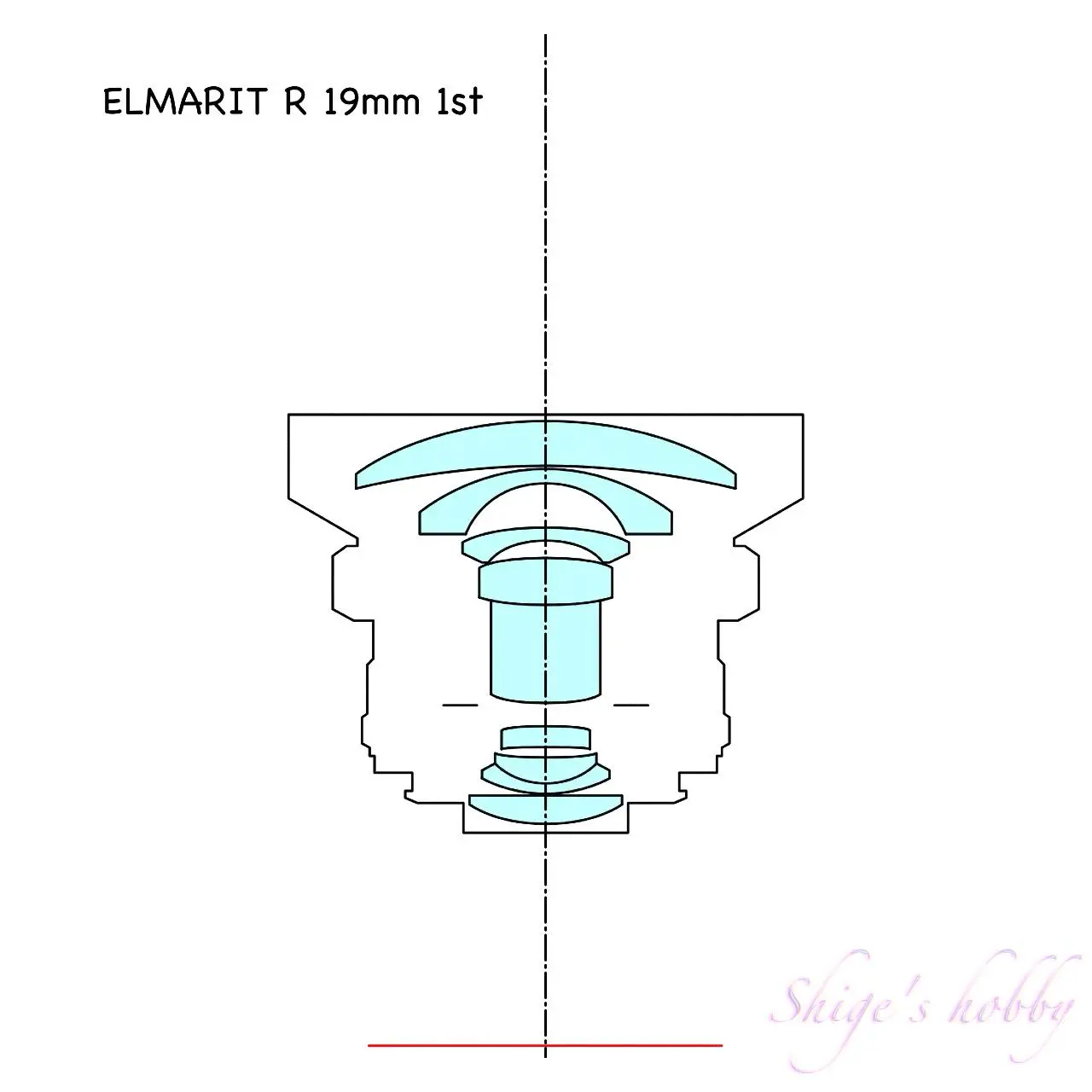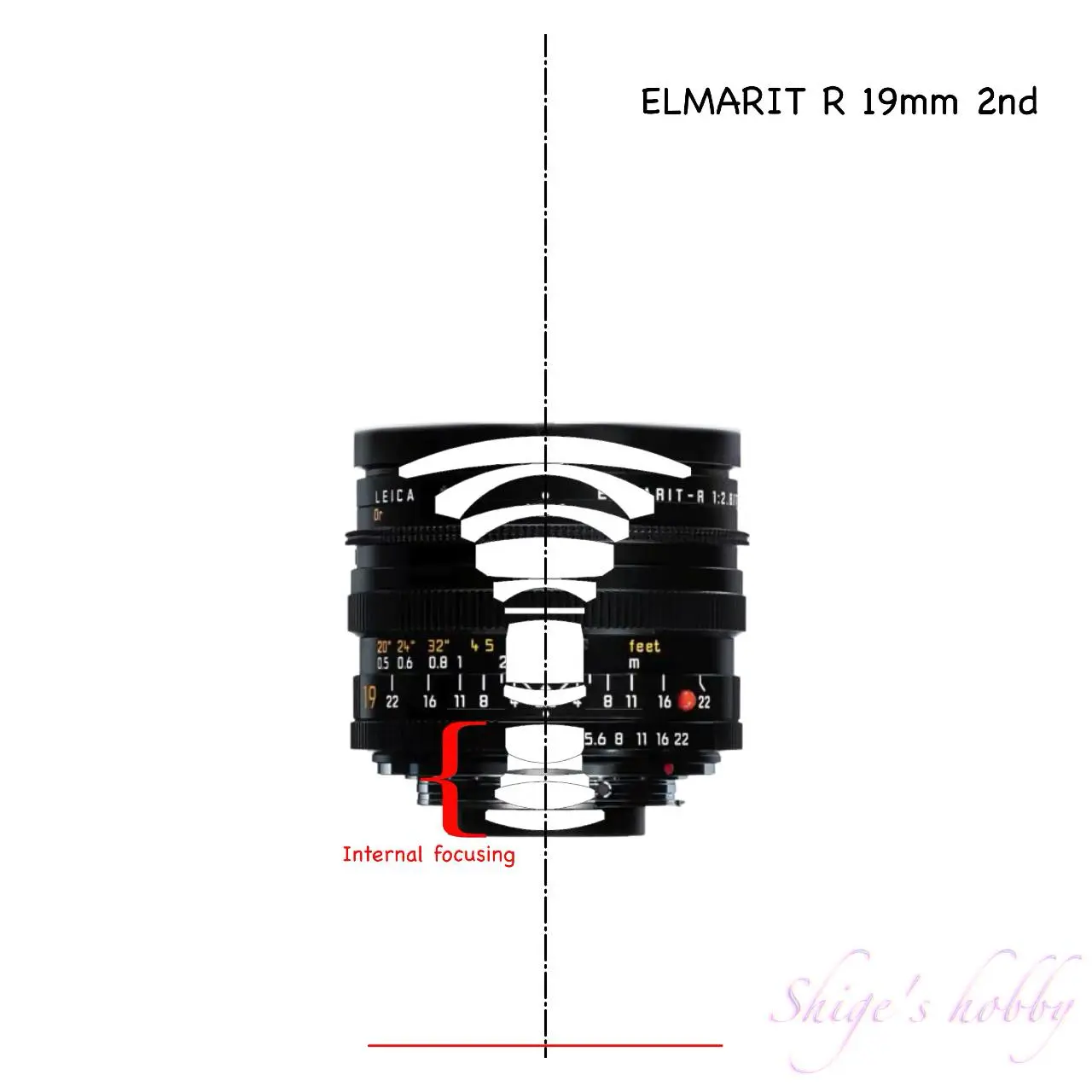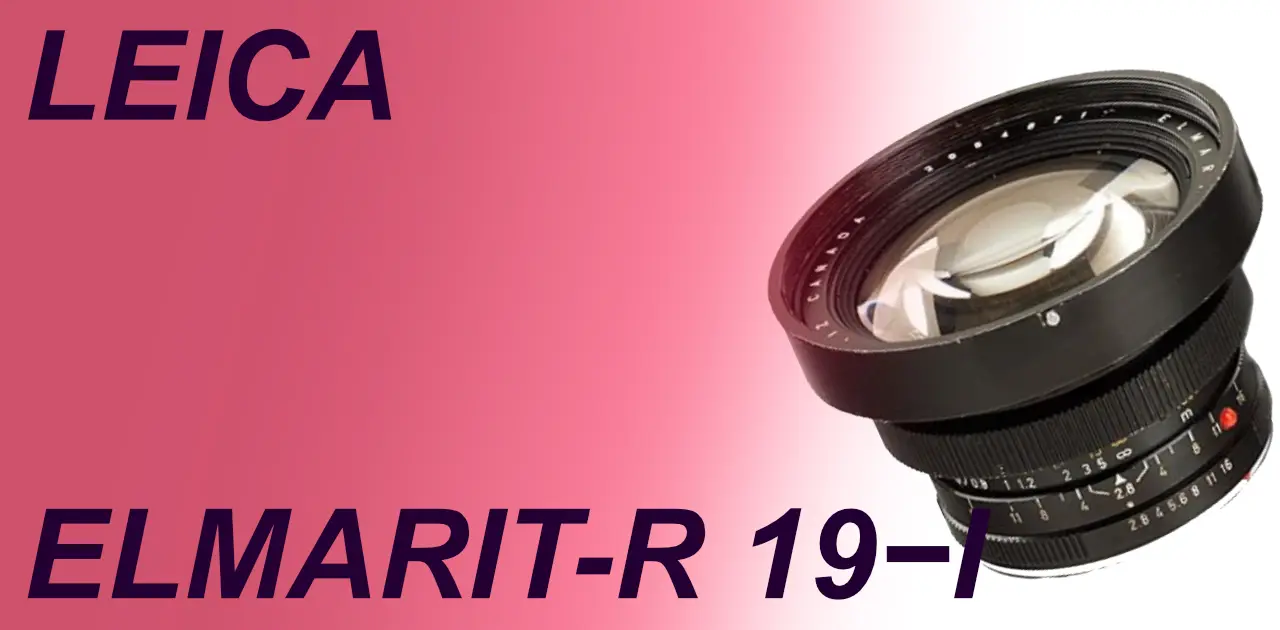Last updated on 2025-10-02
A review and sample photos of the Leica Elmarit 19mm F2.8 1-inch lens used with the LEICA SL Typ601 and LEICA Digital Module R.
Table of contents
Gallery
- The example photo was taken using a LEICA SL typ601.
Review
1.Overview
The ELMARIT R 19mm 1st is a wide-angle lens for the Leica R mount released in 1975.
This lens was designed and manufactured by Leica, and it was one of the first lenses for which Leica designed a wide-angle lens in-house.
The lens hood is model number 12529 and is a bayonet type fixed with two pins, which is common for LEICA lenses of this era.
The main specifications are as follows, and details are listed in the table.
- Aperture value: 2.8
- Lens construction: 9 elements in 7 groups
- Aperture blades: 6
- Minimum shooting distance: 0.3m
- Hood: Dedicated pin-on hood (model number 12529)
2.Usability
The ELMARIT R 19mm 1st‘s image quality is typical of an older wide-angle lens design, and when used with a 35mm full-frame sensor camera, the distortion typical of wide-angle lenses can be noticeable depending on the distance from the subject. Vignetting is not particularly noticeable.
My lens is older and the glass has deteriorated, resulting in a slightly blurred, low-contrast image even in direct light, and in backlight, there is eerie reflection due to ghosting or flare, along with an extreme drop in contrast.
Also, when the lens hood 12529 is attached, the lens becomes very large, and if you’re used to the compactness of the ELMARIT R 19mm II, it’s so large that you might hesitate to take it out. When attached to a LEICA SL typ006, the balance between the body and lens is good, but it doesn’t fit well in a camera bag, and when used outdoors, it creates a powerful, imposing appearance.
When using the Digital Module R (DMR) to convert the film cameras LEICA R8 and LEICA R9 into digital cameras, the DMR’s APS-H sensor size results in cropping of the edges and a change in focal length. The DMR’s 35mm equivalent focal length conversion factor is 1.37, so multiplying a 19mm focal length by 1.37 results in a 26mm equivalent focal length.
Attaching a large lens to the LEICA R8 + DMR makes the camera system bulky, but the balance during shooting was good.
As you can see from the converted focal length, the DMR often falls short on the wide-angle side, so this lens, with its 26mm equivalent focal length, was very useful for wide-angle photography.
The lens is available in 1-cam, 2-cam, and 3-cam versions. It is believed that versions with official ROM connectors are no longer manufactured, and I have never seen one with a modified ROM connector on the used market. Despite its long production history and a total production run of 8,200 units, it is one of the rare lenses that rarely appears on the market.
I acquired this lens in exchange for my own Summilux-R 80mm/3-camera, which I had left unsold at a second-hand shop. I already had the newer 19mm, so there was little need for me to own it, but my curiosity to try it out got the better of me and I acquired it. However, as mentioned above, there was nothing particularly noteworthy about the image quality.
The Type 1 lens introduced here is already around 50 years old, and its appearance is reminiscent of an old-fashioned wide-angle lens, with an impressive front element. Its appearance is very similar to the early model of the Russian-made Mir-20M (20mm/F3.5), but as this lens is also a minor lens, I doubt many people will remember it.
3.Summary
In conclusion, to sum up the ELMARIT R 19mm 1st, it is an old wide-angle lens that fully captures the characteristics of a wide-angle lens that gets close to the subject while enveloping the surroundings. If you can find one that fits your budget, it’s a good idea to try it out and enjoy the flavor of an old wide-angle lens.
However, if the lens is cloudy, you should be prepared for reduced contrast, ghosting, and flare in the images. Also, the newer the wide-angle lens design, the better the aberration correction and the less distortion in the image, so if you want a lens that is flat all over and accurately depicts the corners, you will be disappointed if you use an old lens.
Specification and Competitor
When comparing the old and new ELMARIT R 19mm, it is clear that the old model (I type) is larger. This reflects the history of old wide-angle lens design, where shortening the focal length by making the front element larger was the mainstream.
In comparison, the new model has a more modern design, and while it has the same specifications, the lens diameter has been reduced from 88mm in the old model to 71mm, making for a more compact lens barrel.
The lens construction diagrams are quoted from each company’s handouts, and the sizes have been adjusted here, so they are not exact.


| Items | ELMARIT R 19mm 1st | ELMARIT R 19mm 2nd |
| Focal length(mm) | 19 | 19 |
| Max aperture | 2.8 | 2.8 |
| Min aperture | 16 | 22 |
| Lens Construction | 7群9枚 | 10群12枚 |
| Leaf blade | 6 | 6 |
| Min distance(m) | 0.3 | 0.3 |
| Lens length(mm) | 58 | 60 |
| Max diameter(mm) | 88 | 71 |
| Filter Size(mm) | 82 | – |
| Weight(g) | 815 | 560 |
| Production number | 8,200 | 5,900 |
| Release date | 1975-1987 | 1990-2003 |
Reference links
Update history
- 2025.6.6
- 2024.7.30
- 2024.04.13
- 2023.12.14
- 2022.12.31
Afiliate links
- Please see the disclaimer regarding advertising here.
- Italicized links in the text are advertisement links that take you to other sites.
- Leica lens・Ads by Amazon
- Leica digital・Ads by Amazon
- Leica camera body・Ads by Amazon
- Leica accessory・Ads by Amazon
- Leica book・Ads by Amazon




Be First to Comment